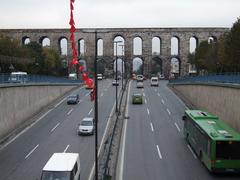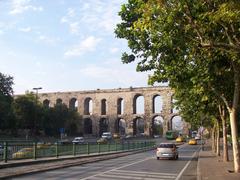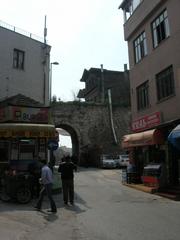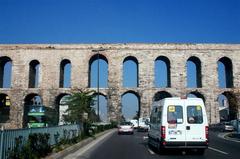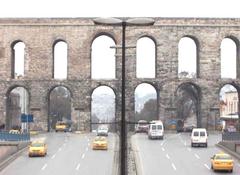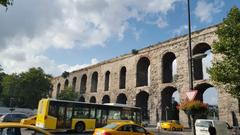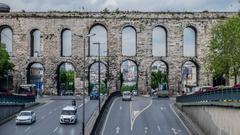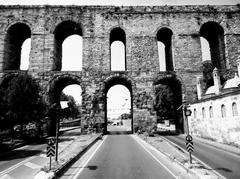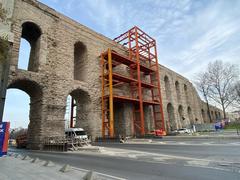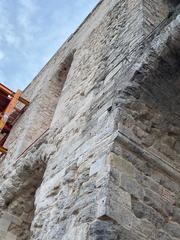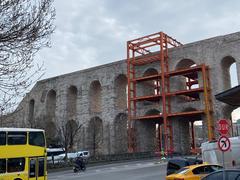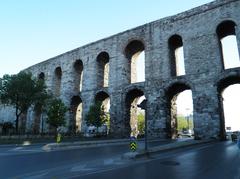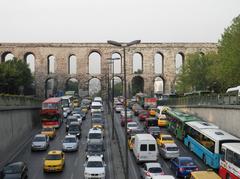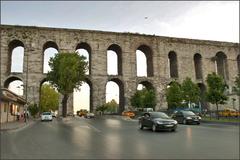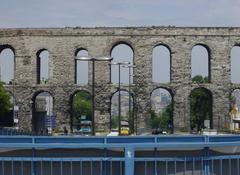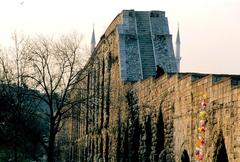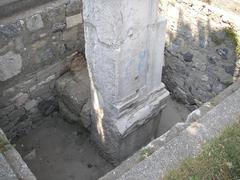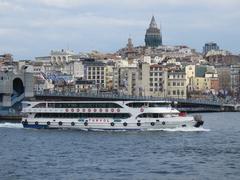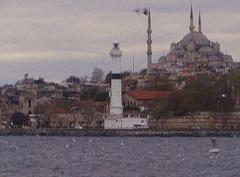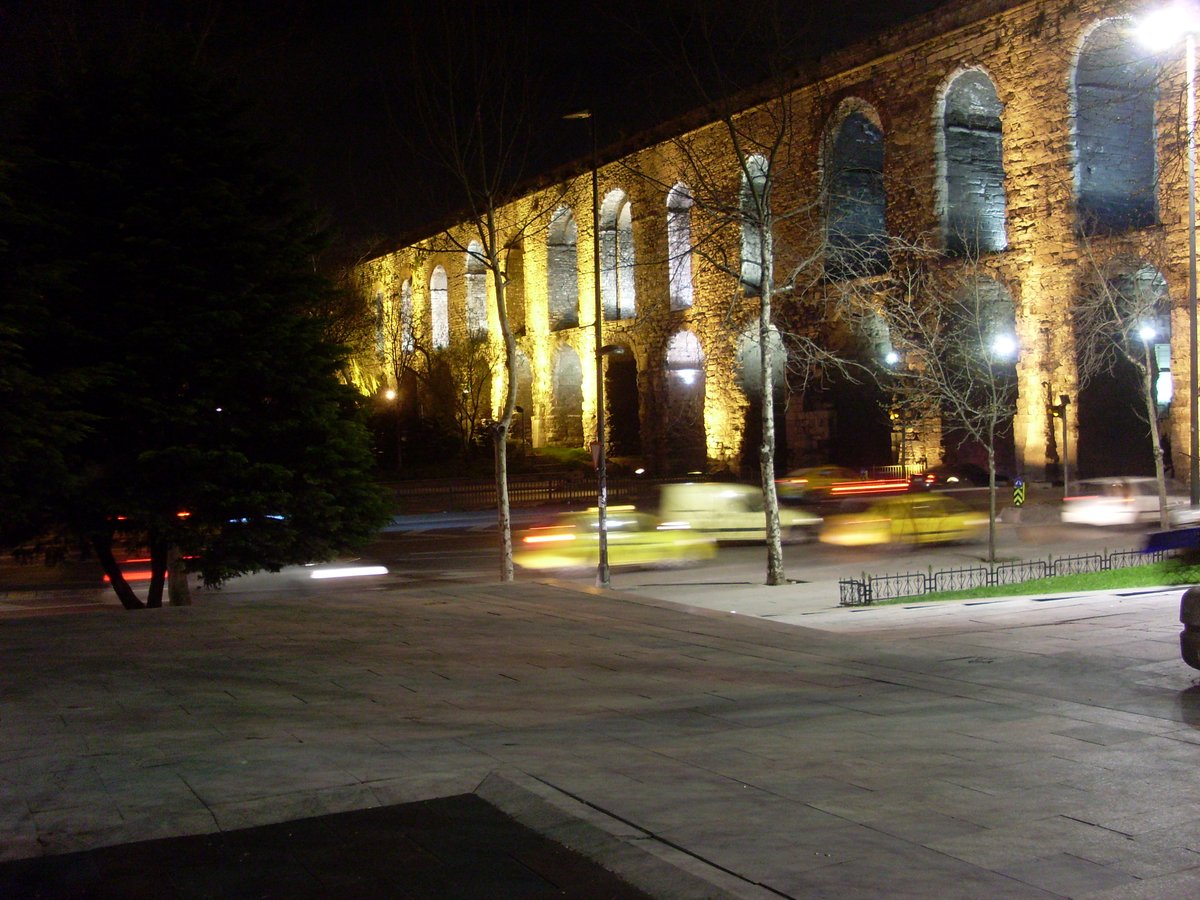
Comprehensive Guide to Visiting Bozdoğan Su Kemeri, Istanbul, Türkiye
Date: 24/07/2024
Introduction
The Bozdoğan Su Kemeri, commonly known as the Valens Aqueduct, is a magnificent testament to ancient engineering prowess that has withstood the test of time. Situated in the bustling Fatih district of Istanbul, Türkiye, this historical structure offers a unique glimpse into the architectural and cultural heritage spanning the Roman, Byzantine, and Ottoman periods. Constructed during the reign of Roman Emperor Valens in the late 4th century, the aqueduct was an essential component of Constantinople’s water supply system, showcasing the ingenuity and resourcefulness of ancient civilizations. Today, it stands as a prominent landmark, seamlessly integrated into Istanbul’s modern urban landscape, and continues to attract tourists, historians, and architecture enthusiasts from around the world. For more detailed information, you can refer to sources like Wikipedia, Frommers, and Istanbulpoints.
Table of Contents
- Introduction
- Historical Background
- Architectural Features
- Modern Era
- Visitor Information
- FAQ
- Conclusion
- References
Historical Background
Roman Period
The Bozdoğan Su Kemeri, a monumental aqueduct in Istanbul, Türkiye, has its roots in the Roman period. Construction began under Emperor Hadrian and was completed in 368 AD during Emperor Valens’ reign. The aqueduct was part of a larger water supply system to meet the needs of the growing city of Byzantium, later re-founded as Constantinople by Constantine the Great. The structure spans the valley between the third and fourth hills of Constantinople, using stones from the walls of Chalcedon. It was inaugurated in 373 AD by the urban prefect Clearchus, who also commissioned a Nymphaeum Maius in the Forum of Theodosius.
Byzantine Period
During the Byzantine era, the aqueduct continued to be a critical water supply source. After a severe drought in 382 AD, Emperor Theodosius I constructed the Aquaeductus Theodosiacus, integrating it into the existing system and enhancing the city’s water supply capabilities. The aqueduct’s continuous use and maintenance underscored its importance, supplying water to Byzantine palaces and city cisterns for over a millennium.
Ottoman Period
The Bozdoğan Kemeri saw several restorations during the Ottoman period, reflecting its enduring significance. Sultan Suleiman the Magnificent and Sultan Mustafa II were notable for their contributions to its repairs and additions. The aqueduct continued to transport water to key locations, including the Topkapi Palace, showcasing its resilience and adaptability through various historical periods.
Architectural Features
The Bozdoğan Kemeri is an architectural marvel, characterized by its impressive length and height. Originally measuring 971 meters in length and reaching a maximum height of about 29 meters, the aqueduct has a constant slope of 1 - 1000. The masonry combines ashlar blocks and bricks, with the first row of arches built using well-squared stone blocks and the upper row constructed with alternating courses of stones and smaller materials. The design includes both single and double-order arches, with various sections dating back to the Roman and Ottoman periods. Although originally built to run perfectly straight, the aqueduct was bent during the construction of the Fatih Mosque.
Modern Era
Today, the Bozdoğan Kemeri stands as a testament to ancient engineering prowess. The surviving section is 921 meters long, spanning the valley between the hills currently occupied by Istanbul University and the Fatih Mosque. The aqueduct remains a prominent landmark, with its arches passing over Atatürk Boulevard, creating a striking contrast between the historic structure and the modern cityscape. It continues to attract visitors and historians alike, offering a glimpse into Istanbul’s rich past and sophisticated engineering techniques.
Visitor Information
For those planning to visit the Bozdoğan Kemeri, it is located in the Fatih district of Istanbul. The nearest metro station is Vezneciler - Istanbul University on the M2 Yenikapi-Haciosman line, and the closest bus stop is Istanbul Buyuksehir Belediyesi, served by numerous IETT buses. While there is no entrance fee for viewing the aqueduct, guided tours may be available through local tour operators. The site is accessible year-round, but visitors should check for any special events or maintenance work that might affect access.
Visiting Hours and Tickets
- Visiting Hours - Open 24/7, best visited during daylight hours for optimal viewing.
- Tickets - No tickets required for general viewing. Guided tour prices vary.
Travel Tips
- Accessibility - The site is easily accessible by public transport and on foot.
- Nearby Attractions - Istanbul University, Fatih Mosque, and other historical sites in the Fatih district.
- Photography Spots - The arches over Atatürk Boulevard provide excellent photographic opportunities.
FAQ
What are the visiting hours for Bozdoğan Su Kemeri?
The site is open 24/7, best visited during daylight hours.
How much are tickets for Bozdoğan Su Kemeri?
There is no entrance fee for general viewing. Guided tours may have varying prices.
What is the historical significance of Bozdoğan Su Kemeri?
The aqueduct is a testament to the engineering prowess of ancient civilizations and has played a crucial role in Istanbul’s water supply system across Roman, Byzantine, and Ottoman periods.
Are there guided tours available?
Yes, guided tours provide in-depth historical and architectural insights.
What are the nearby attractions?
The Fatih district offers various historical sites, including the Süleymaniye Mosque and the Grand Bazaar.
Conclusion
In summary, the Bozdoğan Su Kemeri is not just an architectural feat but a symbol of Istanbul’s historical continuity and resilience. Its enduring presence through various empires and its role in the city’s water supply system highlight its importance in urban development. Visitors can appreciate its historical significance and architectural grandeur, making it a must-see attraction in Istanbul. We encourage you to stay updated on the latest travel tips and historical insights by following us on social media or downloading our mobile app Audiala. For more information, you can check out additional resources from The Other Tour and High Heels and a Backpack.

